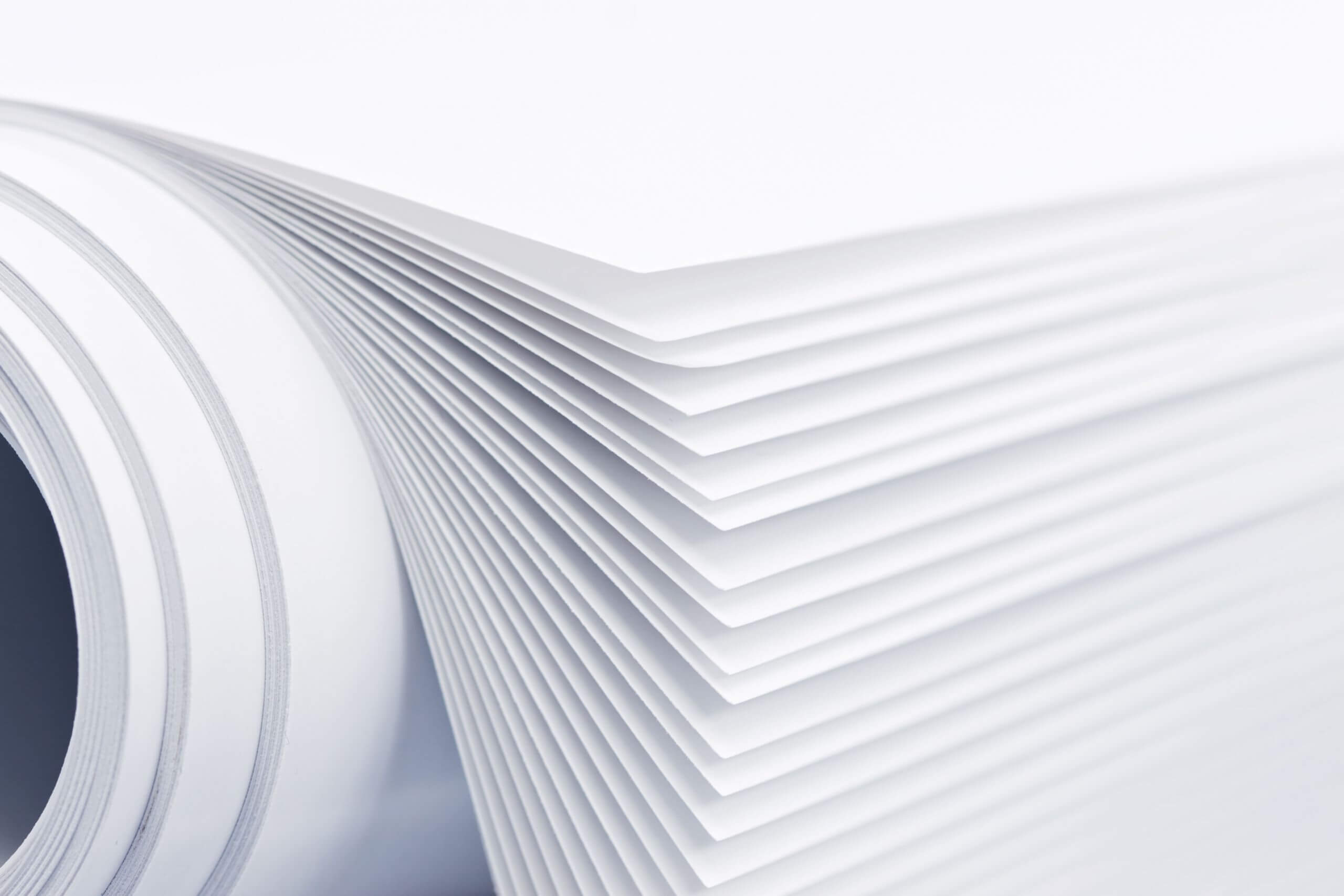You’ve done all the right things for your printing project: clean, eye-catching design, high-resolution images that will keep your readers turning the page, and user-friendly binding that best suits your project. You’re almost set—now you just have one decision to make—selecting paper for printing. Although we offer over a dozen different paper styles, don’t let our selection overwhelm you. All you have to do is follow these three simple tips for selecting paper for printing:
Uncoated Versus Matte Versus Glossy
The first thing to consider when selecting paper for printing is the type of binding you’ve selected. If you’ve decided on perfect bound, for example, we highly recommend going with uncoated or matte paper. That’s because during the perfect binding process, a special glue is used to secure the pages together and create the smooth, polished edge that perfect bound books are known for. The glue adheres much better to uncoated or matte stock.
Next, consider the number of color images in your printing project. If they’re limited, or you’re having us print a project that people will be writing on such as a workbook, we suggest going with an uncoated text stock. Here at Dazzle Printing, we don’t like our customers paying for anything more than what they need. Uncoated paper is a more cost-efficient choice than matte or gloss, and you’ll find that in spite of its name, it’s far sturdier than your standard copier paper.
But what if you’re using multiple color images and a stitch, coil, or wire-o binding? Then it’s often a matter of taste. Do you prefer a polished sheen to your project? If you’re using multiple color images and you really want them to stand out, consider glossy paper. It’s perfect for popping vivid color images and reflecting the rich contrast among the colors.
But what about matte? Many people assume that because matte paper isn’t shiny, it’s flimsier than glossy stock. But appearances can be deceiving! Matte stock actually weighs the same as glossy, and although it features a softer, more muted appearance, matte paper is coated with the same chemicals as glossy paper; the manufacturers just use less of it. This classy, sophisticated choice works especially well with lighter colors or projects that infuse heavy text with photos and/or colorful design.
Cover Versus Text Stock: Selecting Paper for Printing
Don’t let these two confuse you when selecting paper for printing—it’s pretty simple to remember the difference. Cover stock (sometimes referred to as card stock) is pretty self-explanatory; it’s simply a heavier, sturdier option for the cover of your book or booklet or projects like business cards and mailers.
Text stock, on the other hand, is a thinner, more flexible paper designed for the inside pages of your book or booklet or projects like brochures and calendars. By the way, when selecting paper for printing, you don’t have to choose cover stock for the cover of your book or booklet; you’re welcome to choose text stock as your cover page too. In fact, we have many customers who go this route, particularly if they’re asking us to print workbooks or similar projects.
Another helpful tidbit when it comes to selecting paper for printing is that cover stock is ALWAYS heavier than text stock, regardless of the number. For example, an 80# cover stock will feel noticeably sturdier than a 100# text stock.
If you do choose a cover-weight stock for your cover page, consider matching the same number when selecting your text stock for the inside pages. So if you’re going with an 80# cover stock for the project’s cover, you might consider choosing 80# text stock for the inside pages.
Choosing Your Paper Weight When Selecting Paper for Printing
Now that you have a better understanding of our three types of paper coating (uncoated, matte, and glossy) when selecting paper for printing and the difference between cover and text stock, let’s move on to selecting the weight of your paper.
The first thing to consider is the number of pages in your document. As a general rule of thumb, think of project size and paper weight as having an inverse relationship: the more pages you have in your book or booklet, the lighter the paper you’ll want to use.
On a similar note, if your project has fewer pages, we typically suggest selecting a heavier stock paper, or you could find yourself with a flimsy feeling project that just doesn’t have the oomph factor you’re going for.
Here’s a handy guide to help with selecting paper for printing, based on project or binding type:
60# text: an affordable option for projects like mass promotional flyers that don’t incorporate much color.
70# text: letterhead, newsletters, workbooks, and flyers that use minimal color.
80# text: magazines, booklets, manuals, catalogs, and posters (this weight also works as a more durable newsletter, brochure or flyer choice, especially if it incorporates more color).
Dazzle Printing Tidbit: We typically recommend this weight as the starting point for your wire-o or spiral-bound books and booklets.
80# cover: postcards, business cards, and mailers.
100# text: catalogs, brochures, portfolio booklets, and calendars.
100# cover: often selected for book or booklet covers with perfect binding.
120# cover: This is our suggested weight for the covers of wire-o or spiral-bound projects. This weight cannot be used for saddle stitch or perfect binding.
We hope you’re now feeling more informed and confident in choosing paper for printing! If you still have a few questions, we are always happy to offer our expertise.
Just call us at 1-800-338-4329 or take advantage of our online chat support, located in the lower right hand corner of our website. We can also send a samples package at your request, which includes tangible samples of all of our paper stocks to help you feel more empowered about your decision. Ready? Let’s do this! Be sure to check out our numerous 5-star Google reviews.





